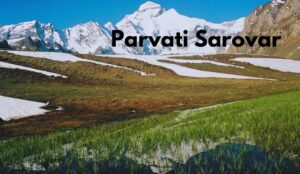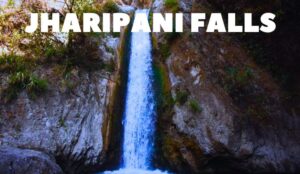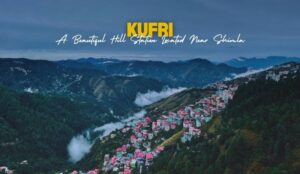The Jumma-Dronagiri Trek is a captivating and challenging trekking route situated in the Garhwal region of the Indian state of Uttarakhand. This trek takes adventurers through some of the most stunning and remote landscapes in the Garhwal Himalayas, offering breathtaking views of snow-capped peaks, lush alpine meadows, dense forests, and pristine rivers. While there may not be an extensive documented history specific to the trek, the region has a rich cultural and historical context tied to the broader Garhwal Himalayas.
Geographical Significance:
1. Location:
- The Jumma-Dronagiri Trek is centered around the Dronagiri massif, which is part of the Nanda Devi Biosphere Reserve, a UNESCO World Heritage Site.
- The trek starts from Jumma, a small village situated in the Dhauliganga Valley.
2. Dronagiri Massif:
- Dronagiri is a mountain massif that includes several peaks, with the highest being Dronagiri Parbat, standing at an elevation of 7,066 meters (23,182 feet).
- The region is known for its challenging terrain and spectacular views of surrounding peaks, including Nanda Devi.
Cultural Significance:
1. Local Communities:
- The trek takes trekkers through traditional Garhwali villages, providing an opportunity to interact with the local communities.
- Villagers in this region have a rich cultural heritage, and their way of life is often closely tied to the mountains.
2. Ancient Temples and Shrines:
- The Garhwal region is known for its ancient temples and shrines that hold cultural and religious significance.
- Trekkers may encounter small temples along the route, providing insights into the local religious practices.
Historical Context:
While specific historical details about the Jumma-Dronagiri Trek may be limited, the broader Garhwal Himalayas have historical significance:
1. Exploration and Mountaineering:
- The Garhwal region has been a focal point for explorers and mountaineers for centuries.
- Early explorations and attempts to conquer peaks in the Nanda Devi region, including Dronagiri, contributed to the rich history of mountaineering in the Himalayas.
2. Nanda Devi Sanctuary:
- The Nanda Devi Sanctuary, of which Dronagiri is a part, has a history of being a sacred and restricted area.
- The sanctuary was closed to the public for several years to preserve its unique biodiversity.
3. Himalayan Conservation Initiatives:
- The Nanda Devi Biosphere Reserve, encompassing the Dronagiri region, reflects a commitment to conservation and sustainable development.
- The establishment of biosphere reserves has historical ties to global efforts to protect ecologically sensitive areas.
Best Time to Visit:
The timing of your trek is crucial for a safe and enjoyable experience in the Himalayas.
Late Spring to Early Autumn (May to October):
- Late spring to early autumn is the prime trekking season.
- May to June showcases blooming rhododendrons (Buransh) and lush greenery.
- September to October offers stable weather and clear skies, enhancing the panoramic views.
How to Reach:
Accessing the Jumma-Dronagiri trek requires a multi-step journey, ensuring you reach the trailhead well-prepared for the adventure.
Reach Joshimath:
- Most trekkers start from Joshimath, accessible by road from Haridwar or Rishikesh.
- Regular buses and shared cabs are available for the picturesque journey.
Joshimath to Jumma:
- From Joshimath, hire a cab to reach Jumma, the starting point of the trek.
- The scenic drive offers glimpses of the mighty Nanda Devi peak.
Trek Commencement:
- The trek officially begins at Jumma, and a local guide can assist in navigating the trail.
Things to Do There:
The Jumma-Dronagiri trek isn’t just about reaching the summit; it’s an opportunity to engage with the natural beauty and cultural richness of the region.
Explore Local Culture:
- Interact with the friendly locals in Jumma and learn about their traditional customs.
- Immerse yourself in the unique Garhwali way of life.
Photography Opportunities:
- Capture the vibrant rhododendron blooms, picturesque landscapes, and awe-inspiring mountain vistas.
- Sunrise and sunset are particularly magical moments for photography enthusiasts.
Stargazing at Base Camp:
- Spend an evening at the Jumma Base Camp stargazing.
- The clear mountain skies offer a spectacular view of the celestial panorama.
Grade of Trekking:
The Jumma-Dronagiri trek presents varying levels of difficulty, catering to both novice and experienced trekkers.
Moderate to Difficult:
- The initial days involve moderate trekking through forests and meadows.
- The ascent to Dronagiri becomes more challenging with steep climbs and rocky terrain.
Altitude Considerations:
- The trek takes you to high altitudes, requiring acclimatization.
- Trekkers should be prepared for changes in weather and potential altitude-related challenges.
Conclusion: A Trek to Remember
The Jumma-Dronagiri trek is not merely a physical journey but a spiritual odyssey through the heart of the Himalayas. From the enchanting rhododendron blooms to the panoramic vistas atop Dronagiri, every step on this trek is a celebration of the untamed wilderness. As you descend from this extraordinary adventure, the memories of breathtaking landscapes and the profound connection with nature linger, inviting trekkers to return to the mountains, time and again, in pursuit of that elusive and humbling connection with the sublime. The Jumma-Dronagiri trek is an invitation to explore, discover, and be transformed by the unparalleled beauty of the Himalayas.
FAQs
1. Is a guide necessary for the Jumma-Dronagiri Trek?
While experienced trekkers may navigate the trail independently, it is recommended to hire a local guide. A guide can provide valuable insights into the terrain, assist with navigation, and offer cultural context, enhancing the overall trekking experience.
2. What permits are required for the Jumma-Dronagiri Trek?
Trekkers need to obtain permits to enter the Nanda Devi Biosphere Reserve. Check with local authorities or trekking agencies for the latest permit requirements and ensure all necessary paperwork is in order before starting the trek.
3. Are there accommodation facilities along the Jumma-Dronagiri Trek?
Accommodations during the trek typically include camping at designated campsites. Trekkers are advised to carry their own tents and sleeping bags. Some guided treks may also arrange for basic accommodations at certain points.
4. What kind of wildlife can be encountered during the trek?
The region is home to a variety of wildlife, including Himalayan monal, musk deer, and various bird species. While encounters are not guaranteed, the trek provides opportunities for wildlife enthusiasts to spot unique fauna in their natural habitat.
5. What weather conditions can be expected during the trek?
Weather conditions can vary, but trekkers should be prepared for a range of temperatures. Daytime temperatures in late spring and summer can be moderate, while nighttime temperatures may drop significantly, especially at higher altitudes. Trekkers should also be aware of potential rainfall, especially during the monsoon season.
6. Are there emergency services available along the trail?
Emergency services may be limited, especially in remote areas. Trekkers should carry a basic first aid kit, have a communication plan in place, and be aware of the nearest medical facilities. It’s essential to exercise caution and prioritize safety during the trek.





